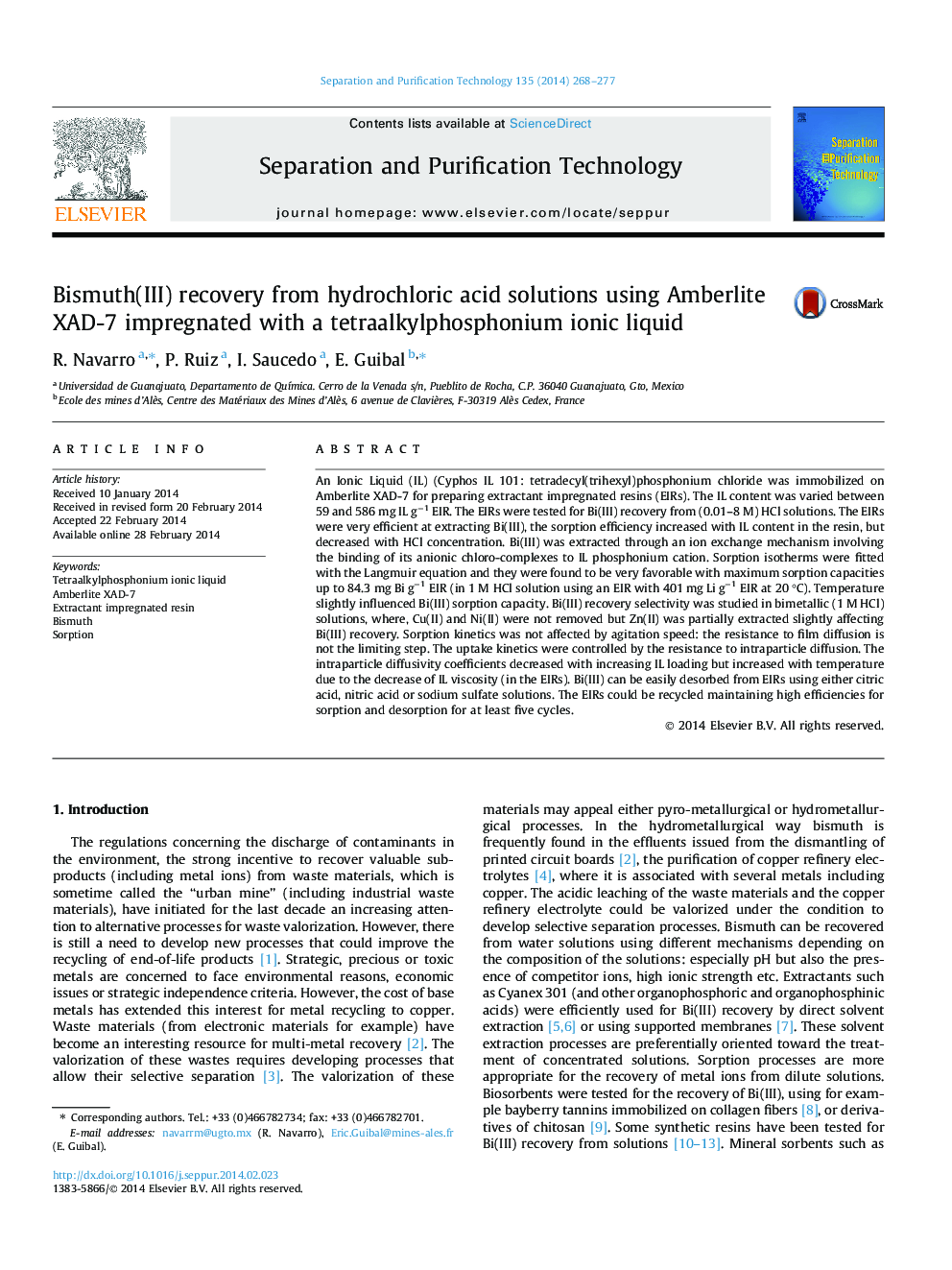| کد مقاله | کد نشریه | سال انتشار | مقاله انگلیسی | نسخه تمام متن |
|---|---|---|---|---|
| 641102 | 1456984 | 2014 | 10 صفحه PDF | دانلود رایگان |

• Cyphos IL 101 immobilized in Amberlite XAD-7 is an efficient sorbent for Bi(III).
• Bi(III) chloro-anions are bound by ion exchange with chloride ions from IL.
• Uptake kinetics is controlled by IL load and viscosity (effect of temperature).
• Selectivity for Bi(III) vs. metals that do not form chloro-anionic complexes.
• Maximum sorption capacity controlled by IL load (proportionality).
An Ionic Liquid (IL) (Cyphos IL 101: tetradecyl(trihexyl)phosphonium chloride was immobilized on Amberlite XAD-7 for preparing extractant impregnated resins (EIRs). The IL content was varied between 59 and 586 mg IL g−1 EIR. The EIRs were tested for Bi(III) recovery from (0.01–8 M) HCl solutions. The EIRs were very efficient at extracting Bi(III), the sorption efficiency increased with IL content in the resin, but decreased with HCl concentration. Bi(III) was extracted through an ion exchange mechanism involving the binding of its anionic chloro-complexes to IL phosphonium cation. Sorption isotherms were fitted with the Langmuir equation and they were found to be very favorable with maximum sorption capacities up to 84.3 mg Bi g−1 EIR (in 1 M HCl solution using an EIR with 401 mg Li g−1 EIR at 20 °C). Temperature slightly influenced Bi(III) sorption capacity. Bi(III) recovery selectivity was studied in bimetallic (1 M HCl) solutions, where, Cu(II) and Ni(II) were not removed but Zn(II) was partially extracted slightly affecting Bi(III) recovery. Sorption kinetics was not affected by agitation speed: the resistance to film diffusion is not the limiting step. The uptake kinetics were controlled by the resistance to intraparticle diffusion. The intraparticle diffusivity coefficients decreased with increasing IL loading but increased with temperature due to the decrease of IL viscosity (in the EIRs). Bi(III) can be easily desorbed from EIRs using either citric acid, nitric acid or sodium sulfate solutions. The EIRs could be recycled maintaining high efficiencies for sorption and desorption for at least five cycles.
Journal: Separation and Purification Technology - Volume 135, 15 October 2014, Pages 268–277